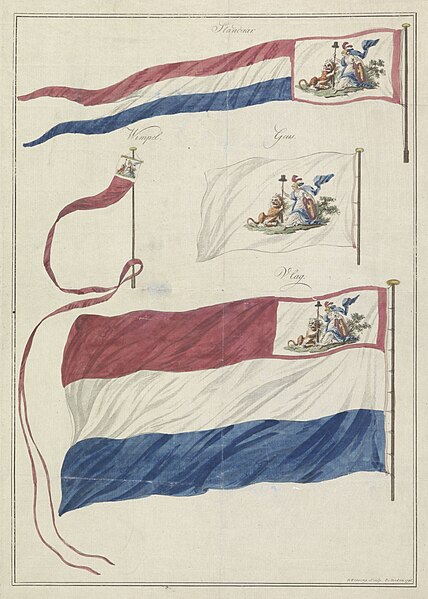The Kingdom of Holland was the successor state of the Batavian Republic. It was created by Napoleon Bonaparte in March 1806 in order to strengthen control over the Netherlands by replacing the republican government with a monarchy. Since becoming emperor in 1804, Napoleon sought to extirpate republican tendencies in territories France controlled, and placed his third brother, Louis Bonaparte, on the throne of the puppet kingdom. The name of the leading province, Holland, now designated the whole country. In 1807, East Frisia and Jever were added to the kingdom.
The arrival of king Louis Bonaparte in Amsterdam on 20 April 1808
The destruction of the gunpowder disaster in Leiden. Louis Napoleon is on this etching visuable as the man in the white clothing.
The Batavian Republic was the successor state to the Republic of the Seven United Netherlands. It was proclaimed on 19 January 1795 and ended on 5 June 1806, with the accession of Louis Bonaparte to the Dutch throne. From October 1801 onward, it was known as the Batavian Commonwealth. Both names refer to the Germanic tribe of the Batavi, representing both the Dutch ancestry and their ancient quest for liberty in their nationalistic lore.
A portrait of William V of Orange-Nassau
Naval flag and pennants of the Batavian Republic. The canton features the Netherlands Maiden.
Herman Willem Daendels (1762–1818)
In The first Kiss this Ten Years! —or—the meeting of Britannia & Citizen François (1803), James Gillray caricatured the peace between France and Britain.






